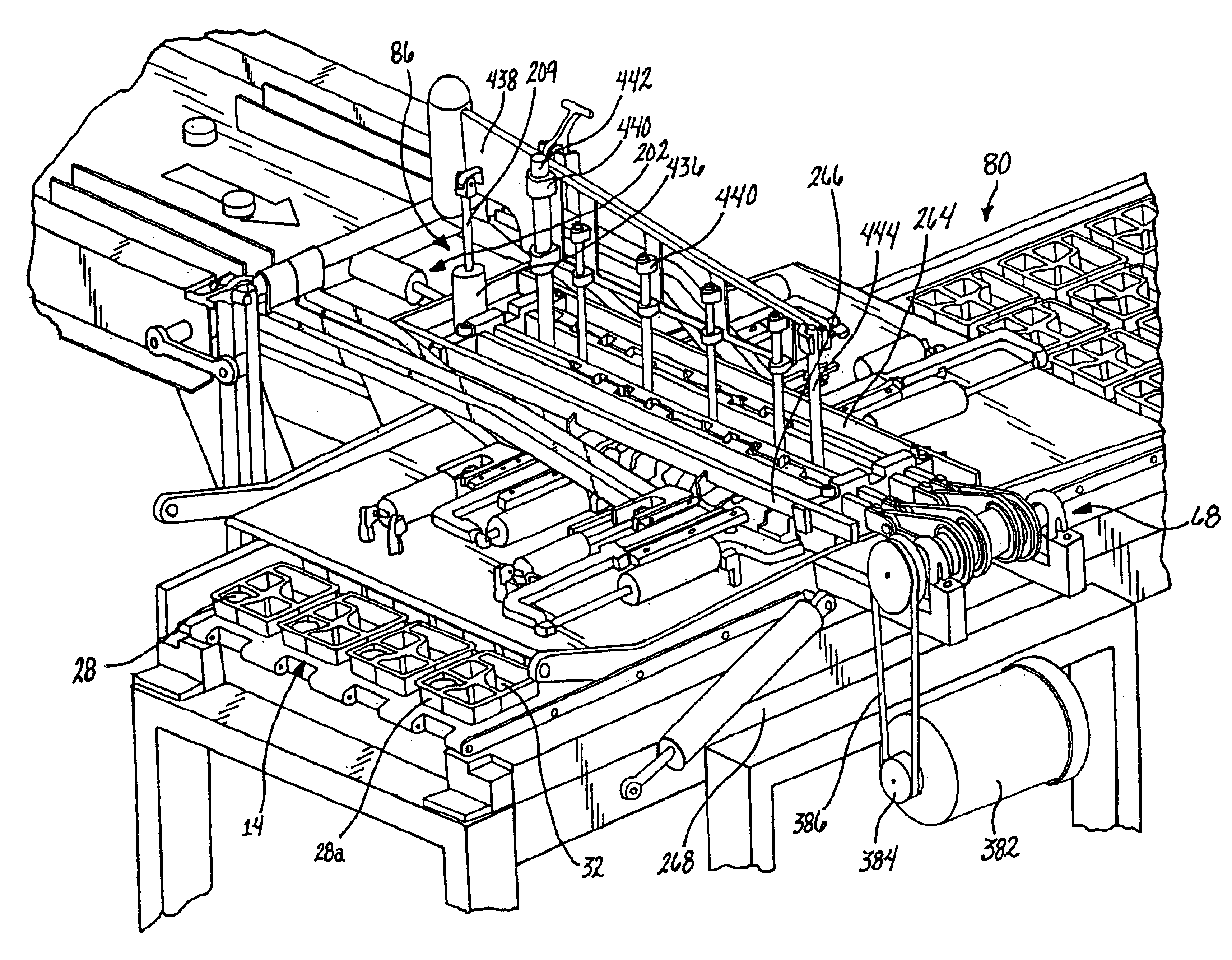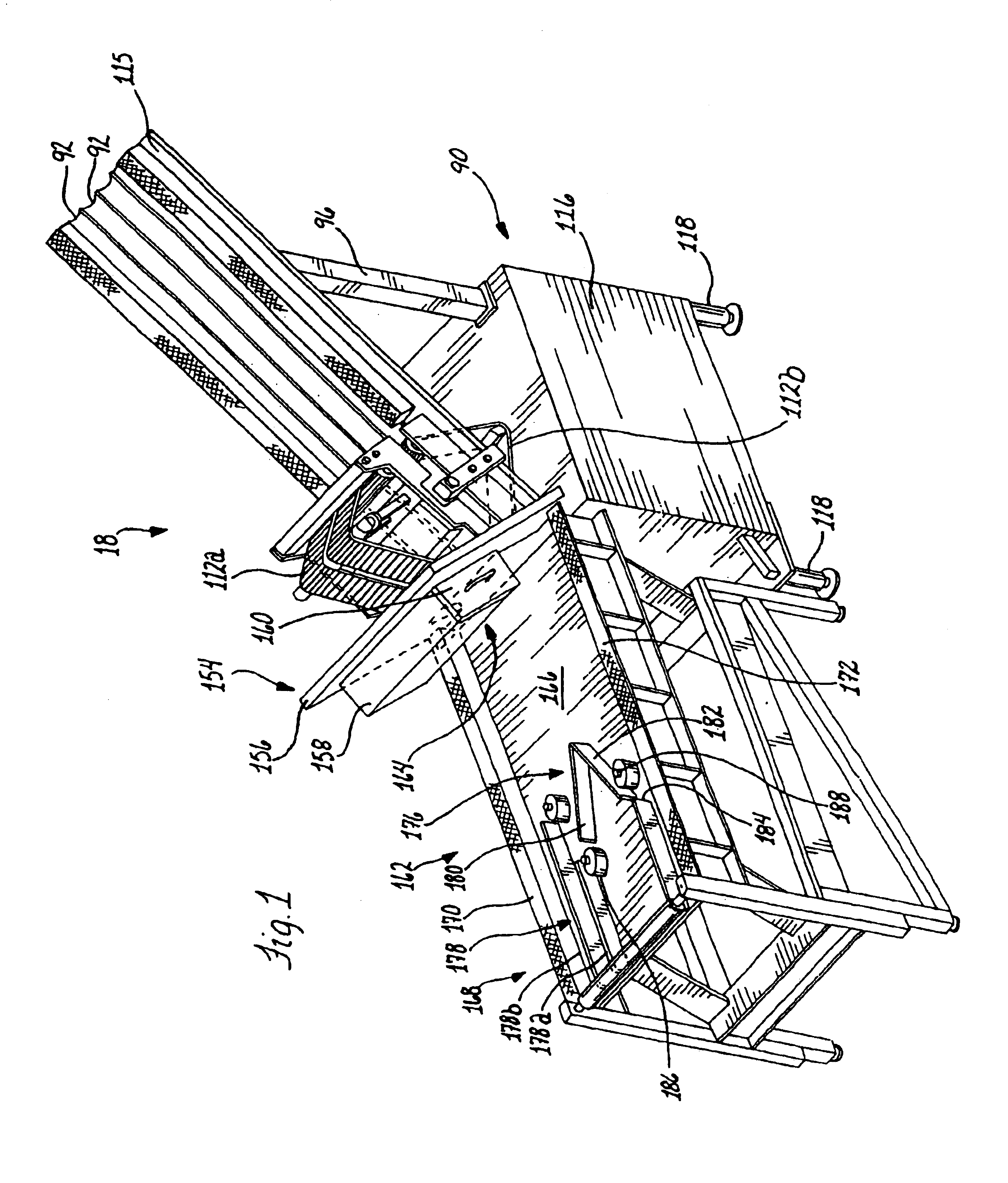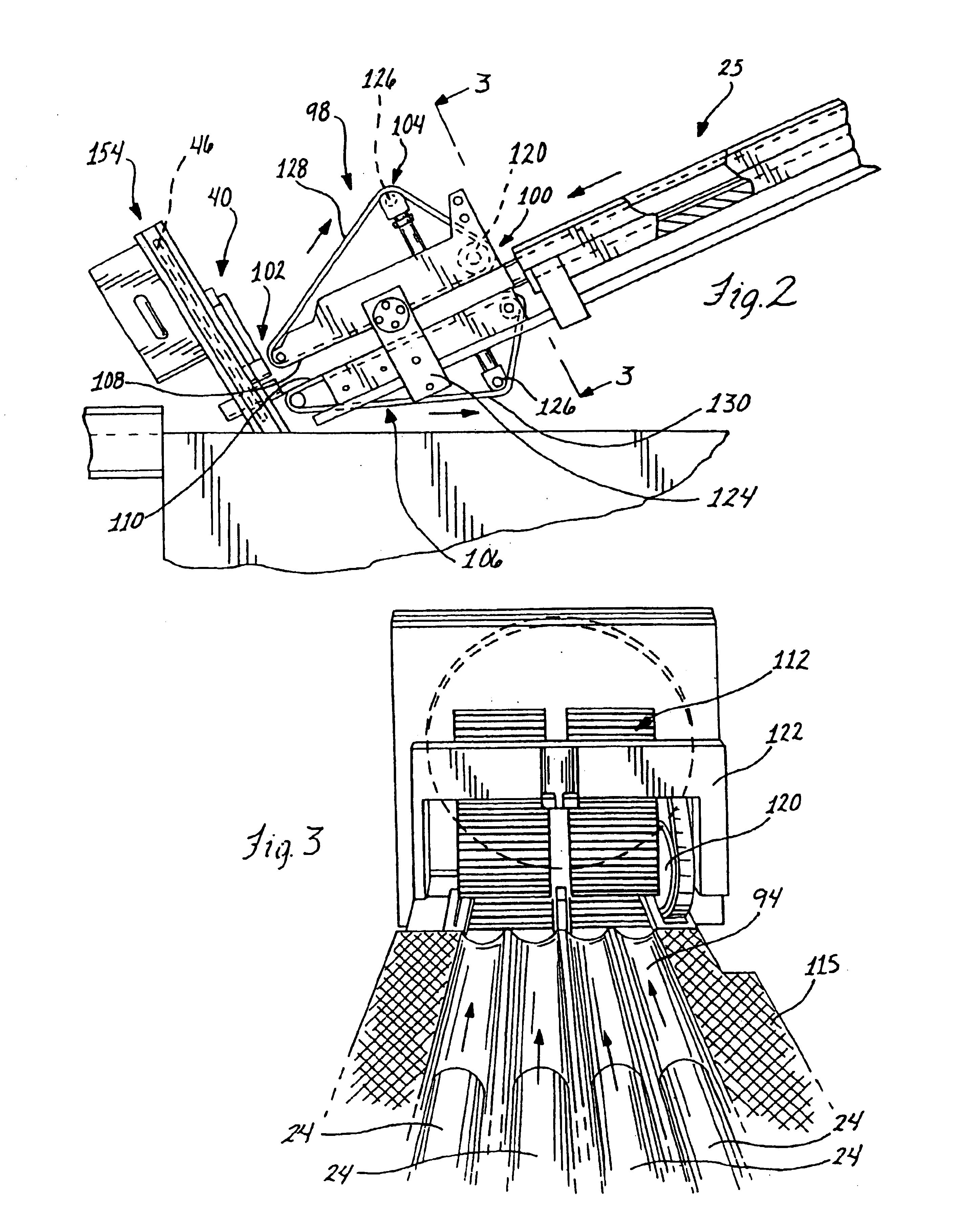Automated method for placing sliced food stacks in packages
a technology of automatic slicing and food stacks, which is applied in the field of automatic slicing system and method of meat products, can solve the problems of attending difficulties, reduce the possibility of introducing contamination to meat slices, and achieve the effects of reducing the possibility of introducing contamination, increasing productivity, and speeding up throughpu
- Summary
- Abstract
- Description
- Claims
- Application Information
AI Technical Summary
Benefits of technology
Problems solved by technology
Method used
Image
Examples
Embodiment Construction
In FIGS. 1, 15 and 32, the various stations for cutting and slicing of a food product 10, e.g. precooked luncheon meats, into stacks and for automated placement thereof in packages 14 are shown. FIG. 38 shows the method of operation at the various stations to provide an automated system 16 that slices the luncheon meat 10, generates well-formed stacks 12 of the sliced meat 10, and automatically transfers the well-formed stacks 12 into the packages 14 avoiding manual handling of the meat 10 at each of the operating stations.
More specifically, the stations include a slicing station 18, and a chub harping station 20 and stack insertion station 22 adjacent to each other, as can be seen in FIG. 32. After a worker loads meat logs 24 into feed section 26 at the slicing station 18, handling by the workers of the meat 10 ceases and is no longer required as the meat logs 24 are cut into chubs 26 that correspond to the predetermined amount of meat to be placed in an individual package 14, and ...
PUM
| Property | Measurement | Unit |
|---|---|---|
| diameter | aaaaa | aaaaa |
| diameter | aaaaa | aaaaa |
| thickness | aaaaa | aaaaa |
Abstract
Description
Claims
Application Information
 Login to View More
Login to View More - R&D
- Intellectual Property
- Life Sciences
- Materials
- Tech Scout
- Unparalleled Data Quality
- Higher Quality Content
- 60% Fewer Hallucinations
Browse by: Latest US Patents, China's latest patents, Technical Efficacy Thesaurus, Application Domain, Technology Topic, Popular Technical Reports.
© 2025 PatSnap. All rights reserved.Legal|Privacy policy|Modern Slavery Act Transparency Statement|Sitemap|About US| Contact US: help@patsnap.com



